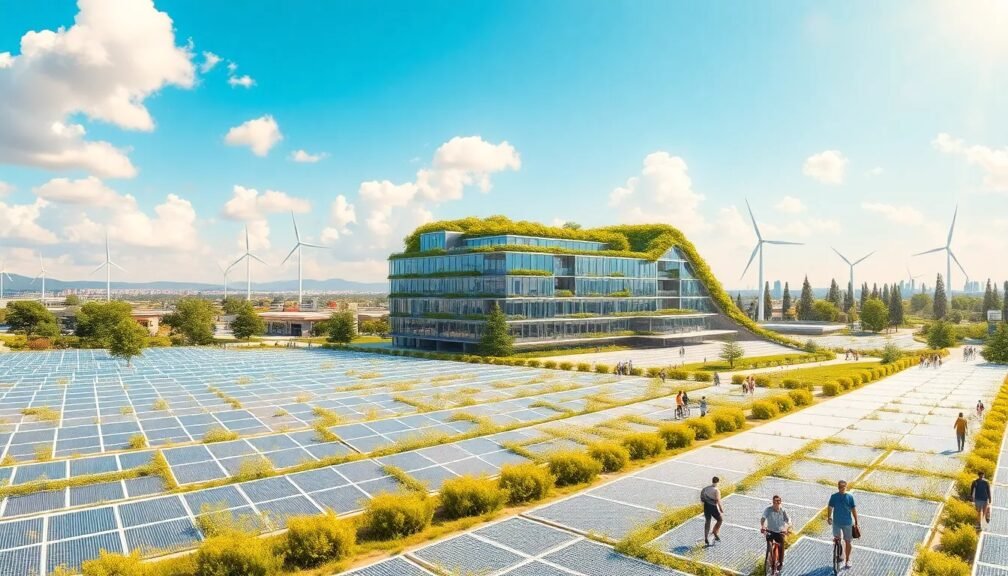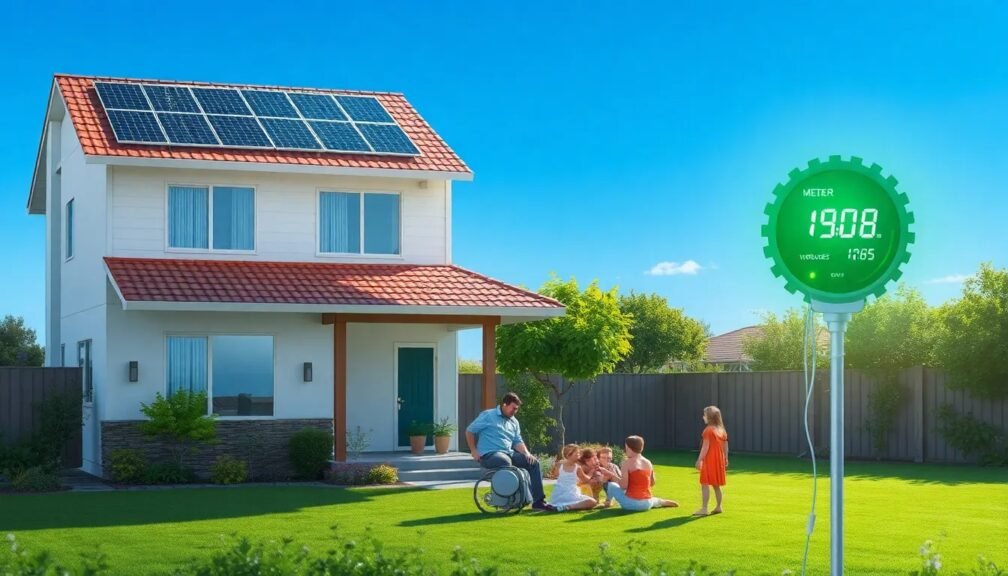As global energy demands soar and the effects of climate change become increasingly evident, the need for sustainable energy solutions has never been more urgent. This shift from traditional fossil fuels to renewable energy sources is not just important—it is essential. Sustainable energy solutions encompass a range of practices and technologies aimed at producing energy that meets today’s needs without compromising the ability of future generations to meet their own. In this article, we will explore various sustainable energy solutions, their benefits, and how they contribute to a greener future.
Understanding Sustainable Energy Solutions
What Are Sustainable Energy Solutions?
Sustainable energy solutions are practices, technologies, and systems that use renewable resources to produce energy efficiently and responsibly. This includes solar power, wind energy, geothermal energy, hydropower, and bioenergy. The primary goal is to reduce greenhouse gas emissions, minimize environmental impact, and provide a reliable energy supply for both current and future generations.
The Importance of Transitioning to Renewables
Transitioning to sustainable energy solutions is vital for several reasons:
- Environmental Protection: Renewable energy sources produce little to no greenhouse gases, mitigating the impact of climate change.
- Energy Security: By diversifying energy sources, countries can reduce their dependence on imported fuels and enhance energy independence.
- Economic Opportunities: The renewable energy sector is rapidly growing, providing jobs and contributing to economic development.
- Health Benefits: Reduced reliance on polluting fossil fuels leads to cleaner air and better public health outcomes.
Types of Sustainable Energy Solutions
1. Solar Energy
Solar energy harnesses the sun’s power through photovoltaic (PV) cells, converting sunlight into electricity.
Advantages of Solar Energy:
- Abundance: The sun provides an immense amount of energy, capable of meeting global energy needs many times over.
- Low Operating Costs: Once established, solar power systems have minimal maintenance and operating costs.
- Off-Grid Potential: Solar panels can be installed in remote locations, providing energy to communities lacking access to traditional energy sources.
2. Wind Energy
Wind energy generates electricity through turbines that convert kinetic energy from wind into mechanical power.
Advantages of Wind Energy:
- Cost-Effective: The cost of wind energy has dropped significantly in recent years, making it competitive with fossil fuels.
- Land Use Efficiency: Wind farms can coexist with agricultural land, allowing for dual land use.
- Rapid Deployment: Wind projects can often be installed relatively quickly compared to other energy infrastructure.
3. Geothermal Energy
Geothermal energy taps into the heat stored beneath the Earth’s surface, providing a constant and reliable power source.
Advantages of Geothermal Energy:
- Base Load Power: Unlike solar and wind, geothermal energy provides continuous power regardless of weather or time of day.
- Low Emissions: Geothermal energy has a minimal carbon footprint, contributing to cleaner air quality.
- Sustainable: With proper management, geothermal resources can be used sustainably for decades.
4. Hydropower
Hydropower utilizes the flow of water to generate electricity, making it one of the most established forms of renewable energy.
Advantages of Hydropower:
- Reliability: Hydropower plants can provide a consistent and stable source of energy.
- Storage Capacity: Reservoirs can store water for energy generation during peak demand times.
- Irrigation Benefits: Many hydroelectric systems support irrigation, benefiting agriculture in adjacent regions.
5. Bioenergy
Bioenergy derives from organic materials, including plants and waste products. It can be converted into electricity, heat, or biofuels.
Advantages of Bioenergy:
- Waste Reduction: Utilizing organic waste for energy helps reduce landfill waste.
- Carbon Neutrality: As biogenic materials decay, they release carbon dioxide; however, their growth absorbs CO2, making them nearly carbon neutral.
- Rural Development: Bioenergy projects can stimulate local economies, providing jobs and income opportunities in rural areas.
The Role of Technology in Sustainable Energy Solutions
Innovations Accelerating Change
Technological advancements are crucial for enhancing the efficiency and reliability of sustainable energy solutions. Here are some noteworthy innovations:
- Energy Storage Systems: Batteries and other energy storage technologies are vital for addressing the intermittent nature of solar and wind energy, enabling consistent power supply.
- Smart Grids: Smart grids use digital technology to enhance the reliability and efficiency of electricity distribution and consumption.
- Energy Efficiency Technologies: Innovations in building materials and designs, such as smart thermostats and energy-efficient appliances, help reduce energy consumption.
Policy and Regulations
Governments play a pivotal role in promoting sustainable energy solutions through policies and regulations. Incentives such as tax credits, rebates, and funding for renewable energy projects encourage investment and innovation.
International Agreements
Agreements like the Paris Accord reinforce the global commitment to reduce carbon emissions and foster sustainable energy initiatives globally.
Challenges and Barriers to Adopting Sustainable Energy Solutions
Despite the numerous benefits, transitioning to sustainable energy solutions is not without challenges:
1. Financial Barriers
- High Initial Costs: The upfront costs of renewable energy technologies can be a barrier for individuals and businesses.
- Access to Financing: Many small businesses and homeowners struggle to access financing for renewable energy projects.
2. Infrastructure Limitations
- Grid Compatibility: Integrating renewable energy sources into existing grids can be technically challenging.
- Geographical Limitations: Some regions may lack the natural resources necessary to harness certain types of renewable energy.
3. Public Awareness and Acceptance
- Lack of Understanding: Public misconceptions about renewable energy technologies can hinder adoption.
- Resistance to Change: Established fossil fuel industries may resist the transition to renewables due to economic interests.
Moving Towards a Sustainable Future: Actionable Insights
The transition to sustainable energy solutions is a collaborative effort requiring action from individuals, businesses, and governments. Here are some steps you can take:
For Individuals
- Reduce Energy Consumption: Take steps to reduce your energy usage, such as switching to LED lighting and energy-efficient appliances.
- Consider Renewable Options: If possible, invest in solar panels or choose green power options from your utility provider.
For Businesses
- Invest in Renewables: Evaluate the feasibility of integrating renewable energy sources into your operations.
- Promote Sustainability: Adopt sustainable practices within your supply chain and encourage your stakeholders to do the same.
For Governments
- Implement Incentives: Create policies that support renewable energy developers and consumers.
- Invest in Infrastructure: Enhance electricity grids to support the integration of renewable energy technologies.
Conclusion
Sustainable energy solutions are key to ensuring a healthier planet for future generations. By investing in renewable energy technologies, supporting policies that embrace sustainable practices, and taking individual action, we can collectively innovate towards a greener future. The journey towards sustainability involves challenges, but the benefits far outweigh the obstacles. Let’s lead the charge in promoting sustainable energy solutions for a cleaner, healthier, and more sustainable world.



